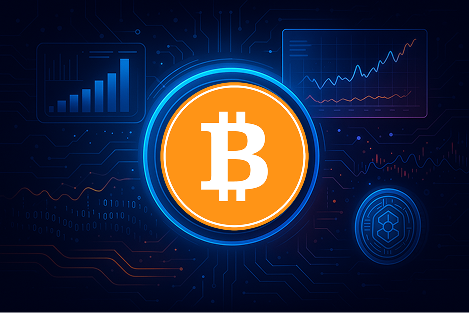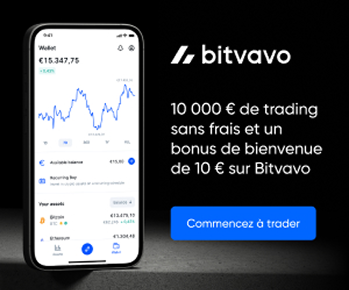Complete XRP Analysis: Price, How It Works & Investing Guide

Explore XRP cryptocurrency: price trends, technical insights, use cases, and smart investment tips in this comprehensive analysis.
Introduction
XRP is one of the most prominent cryptocurrencies designed to revolutionize international payments. This analysis covers XRP’s price trends, how to buy it, its technical workings, and future outlook. Whether you’re a beginner or an experienced investor, understanding XRP’s unique value proposition is key to making informed decisions.Key takeaways
- Short-term price volatility
- Major influencing factors (regulation, adoption)
- Long-term growth potential
- Positioning compared to other leading cryptocurrencies
Presentation of XRP
XRP (symbol: XRP) is a digital asset created to facilitate fast and cost-efficient cross-border payments. It belongs to the category of payment-focused cryptocurrencies designed to bridge traditional financial institutions with blockchain technology. The project’s core objective is to enable banks and financial services to transfer money worldwide within seconds, significantly reducing cost and friction compared to traditional systems. Since its inception in 2012 by Ripple Labs, XRP has steadily gained recognition, especially among financial institutions. Its blockchain, the XRP Ledger, is open-source and designed for scalability and speed.How Does XRP Work?
Unlike Bitcoin or Ethereum, which rely on energy-intensive consensus mechanisms like Proof of Work (PoW), XRP operates on a fundamentally different architecture. It uses the XRP Ledger (XRPL), an autonomous, open-source distributed ledger optimized for speed and energy efficiency.Technology Behind XRP Ledger
The XRP Ledger is a decentralized validation network, but it does not use mining. Instead, it operates on a Consensus Protocol, where validator nodes agree on the ledger state every 3 to 5 seconds. This leads to near-instant transaction finality with extremely low fees and minimal energy use.Consensus Type: Ripple Protocol Consensus Algorithm (RPCA)
The RPCA relies on a list of trusted nodes called the Unique Node List (UNL). Each validator selects who they trust. The system reaches consensus when 80% of validators agree on the validity of transactions, ensuring high throughput and resistance to certain attacks.EVM Compatibility
The XRP Ledger is not compatible with the Ethereum Virtual Machine (EVM), so it doesn’t natively support traditional smart contracts. However, projects such as Hooks and Ripple’s EVM sidechain are working to add optional smart contract capabilities.Technical Features
- Native interoperability: Allows creation and exchange of custom assets including stablecoins.
- Built-in decentralized exchange (DEX) and token issuance.
- Scalability: Capable of 1,500 transactions per second (TPS), much higher than Bitcoin or Ethereum without Layer 2 solutions.
- Ultra-low fees: Each transaction consumes a tiny amount of XRP to prevent spam but does not reward miners.
Use Cases for XRP Token
- Paying transaction fees.
- Acting as a liquidity bridge between currencies in cross-border payments.
- Serving as a minimum reserve to open accounts on the ledger (anti-spam measure).
History and Project Creation
Launch Date and Origin
XRP was launched in 2012 by Ripple Labs Inc., based in San Francisco, USA. The goal was to modernize cross-border payments by providing a faster, cheaper, and more reliable alternative to legacy systems like SWIFT. Unlike Bitcoin’s anti-establishment roots, XRP was designed to collaborate with financial institutions.Key Milestones
- 2011-2012: Development of XRP Ledger by David Schwartz, Jed McCaleb, and Arthur Britto.
- 2012: Founding of OpenCoin (later Ripple Labs) and initial distribution of 100 billion XRP tokens.
- 2013: Ripple Labs releases its open-source payment protocol.
- 2015: Official launch of XRP Ledger and pilot bank partnerships.
- 2017-2018: Growing institutional adoption with partners such as American Express and Santander.
- 2020: SEC lawsuit challenges XRP’s legal status, causing price volatility.
- 2023: Partial legal victory clarifies XRP’s status, reviving institutional interest.
Founders and Team
Founders
- David Schwartz (CTO): Cryptographer and former NSA cybersecurity consultant, key architect of XRPL.
- Jed McCaleb: Early developer, also founder of Mt. Gox and Stellar (XLM). Left Ripple in 2013.
- Arthur Britto: Technical co-founder, crucial to ledger design, maintains a low public profile.
- Chris Larsen: Co-founder and former CEO, fintech entrepreneur who shaped Ripple’s business strategy.
What Makes [Nom cryptomonnaie] Unique?
XRP Specificities
A Crypto Tailored for Banking
XRP uniquely targets the institutional market, focusing on integrating blockchain into existing financial infrastructure rather than replacing it. Its business model centers on improving the efficiency of cross-border payments with practical, scalable solutions.Innovative Use Cases
International Fund Transfers
XRP enables near-instant, low-cost cross-border transactions, improving on traditional systems that can take days and are expensive. Example: A Japanese bank transferring funds to Mexico can use RippleNet and XRP as a liquidity bridge to avoid costly foreign exchange steps.On-Demand Liquidity (ODL)
ODL leverages XRP as a bridge asset for instant liquidity, eliminating the need for pre-funded accounts in multiple currencies.Micropayments and Creator Economy
XRP supports micropayments, enabling seamless online content monetization via platforms like Coil, with negligible fees.Unique Value Proposition
- Ultra-fast transactions (3-5 seconds).
- Extremely low fees (under $0.0001).
- High scalability (1,500 TPS).
- Proven uptime since 2012.
- Neutral, global liquidity bridge.

Comparison Table
| Feature | XRP | Bitcoin | Ethereum |
| Transaction Finality | ~4 seconds | ~60 minutes | ~5-10 minutes |
| Transaction Fees | Very low (~$0.0001) | Often high and variable | Variable, often high |
| Scalability (TPS) | 1,500 | 7 | 30 |
| Energy Consumption | Very low | Very high | High (PoS reduces impact) |
| Primary Use Case | Cross-border payments | Store of value | Smart contracts & DeFi |
Conclusion and Future Outlook
XRP stands out as one of the most established cryptocurrencies due to its institutional adoption and partnerships with leading financial players. It meets a real-world need for fast, low-cost, reliable international payments. Despite regulatory challenges and price volatility, XRP has demonstrated robustness as a critical tool for global finance. Its decentralized validator network, high transaction throughput, and RippleNet ecosystem make it a key player in payment innovation.Long-term prospects include:
- Continued growth in bank and corporate adoption.
- Technological enhancements expanding XRP Ledger capabilities.
- Strengthened global partnerships increasing XRP usage.

FAQ
- What is the purpose of the XRP token? XRP is primarily used to pay transaction fees on the XRP Ledger and act as a liquidity bridge for currency conversions.
- Is XRP a good investment? XRP can diversify your portfolio, especially if you believe in institutional adoption and payment system modernization.
- How does XRP differ from Bitcoin? Unlike Bitcoin, XRP focuses on fast, low-cost cross-border payments without mining or high energy use.
- Where can I store XRP? XRP can be stored on hardware wallets like Ledger Nano, software wallets like Exodus, or secure exchange wallets.
- How does XRP work? XRP uses a unique consensus protocol (RPCA) to validate transactions in seconds without mining and with minimal fees.
- Is the XRP project secure? Yes, XRP Ledger’s decentralized validators and stable operation since 2012 ensure strong security.
Disclaimer :
Trading is risky and you may lose all or part of your capital. The information provided does not constitute financial advice and/or an investment recommendation
Top-Rated Platforms to Trade Crypto
Explore Our Financial Views on the Market
Crypto News & Insights
European Blockchain Convention 2025: Connecting Europe’s
Europe’s blockchain landscape is evolving rapidly despite challenges. Blockchain job...
Blockchain Life 2025 Dubai: A must-attend
The Blockchain Life Forum 2025, happening on October 28–29 in...













